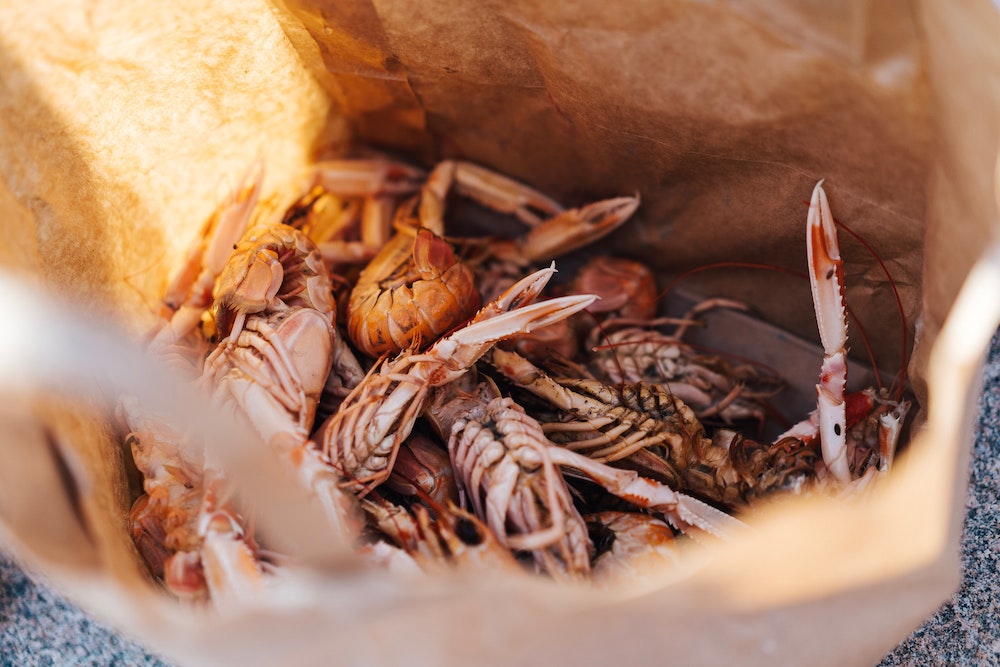To endure the extreme conditions of a survival situation, animal fats and proteins must be eaten regularly, and survival hunting is an essential skill. Such situations are a drain on a person’s energy. Potentially inclement weather forces your body to metabolize calories at an increased rate to stay warm, and performing the physical tasks needed to take care of your body uses a lot of energy. The concentrated calories from wild edible animals obtained through survival hunting are an efficient way to keep the internal fire burning.
In the wilderness, the most practical and accessible wild animals are small game, fish, reptiles and amphibians, and invertebrates. These animals make the most sense to pursue and harvest in a survival hunting situation. First, they make up for their size with quantity of individuals in a given area. Second, they require very little weapon technology to harvest—some require only the hands of the gatherer.
Hunt and Prepare With Care
Small game and birds are important when considering what kinds of animals to pursue for survival hunting. All mammals and birds can be eaten, and animals such as raccoons, jackrabbits and geese can have a substantial amount of flesh to offer. Small mammals and birds are most easily trapped using snares and deadfalls. Having an understanding of the animal’s daily and seasonal movements, diet, and size are extremely important when trapping. Without this natural-history knowledge, traps will be ineffective at best, and a deadly drain on one’s energy, at worst. Another way to catch small animals is through weapons that are thrown. The most simple tools are rocks and good throwing sticks. More advanced tools are the bow and atlatl, though these weapons take a bit more preparation and materials.
All wild game should be cooked thoroughly to kill any microorganisms in the meat. It’s also important when eating very lean meats—such as rabbit—to consume some sort of fat along with it. Otherwise, your body cannot process the protein. One way to avoid this is to singe the hair off the rabbit and cook the rabbit with the skin on, consuming the skin with the flesh. Also, fatty internal organs such as the liver and brains should be utilized.
One Fish, Two Fish
Another option for meat is fish. Because they don’t need quite as much structure to support their bodies in the water, fish are quite fleshy. Fish are harvested through angling, nets, traps, spears, and bow, or even barehanded. Angling involves producing hooks from materials such as bone, wood, or thorns; as well as twisting enough cordage to get the hook to the fish. Nettle, dogbane, milkweed, and yucca all make great fishing-line materials and a single long strand of sinew can make a wonderful leader if tied securely between the hook and line. The hook can either be baited or turned into a lure by affixing it to feathers, fur, yarn, or reflective material.
Spears and bows are two effective tools to use when you have good water clarity and proximity to the fish. Traps are a low-energy alternative to catch fish, since they can be built and set, allowing you to take care of other needs while the fish are caught. Traps can be simple basket types, with a funnel to trap the fish within as they search out the bait. Traps can also be large and elaborate weirs, saplings or stones stuck or stacked in a body of water to channel fish to an area where they can then be plucked from the water. In moving water, the current or tide must be taken into consideration. When in still water, bait can be used, or people can drive fish into the weir. Nets work in the same way when stretched out in the water; or they can take the form of cast nets or dip nets, which require manipulation at the hands of the fisherman.
Tasty and Nutritious Reptiles and Amphibians
Reptiles and amphibians offer many opportunities for the hunter. All amphibians should be skinned before being consumed, because many have toxins in their skin. Bullfrogs are an obvious choice from this order, being large and conspicuous. They can be harvested by a spear, bow, hook and feather, or simply by being whacked with a quickly swung stick. Nighttime provides the opportunity to stalk up with a blinding light, likely getting closer than possible in the day. Reptiles can be very abundant. Turtles, lizards, and snakes (venomous or not) all offer good-tasting meat. Turtles can be caught on baited hooks or in small weir-type traps baited with meat. Most lizards and snakes can be dispatched with a well-swung stick. Turtles should be scrubbed of mud and skinned.
Don’t Forget the Invertebrates!
We don’t often think about invertebrates as food options. Insects, crustaceans, and mollusks are all very high in protein. Many can be simply picked up off the ground or scooped up in an improvised net made from a y-stick and t-shirt, which works well for locusts or grasshoppers. Worms and grubs can be dug from the ground soil or from rotten wood. Turning over logs and rocks also exposes many tasty morsels. Insects and snails can all be cooked directly in the coals before eating, or ground into a rich meal that can be added to soup or bread. The ocean, pond, and river offer many edible invertebrates. Bivalves, whelk, and crabs are delicacies that can be found at the seashore. Streams and lakes often harbor crayfish, which can be easily baited and trapped, or plucked from out under rocks. All invertebrates should be cooked well; they can also harbor deadly microorganisms and parasites.
With a little natural-history knowledge, experience with crafting tools and an adventurous appetite, you can find edible wild meat in the outdoors. Whether they have four legs, six legs, no legs or wings, small animals are an efficient way to gather the calories needed in a survival situation.
